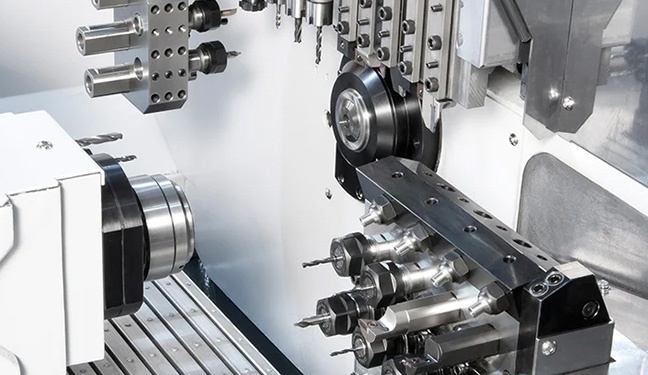High precision and low noise NO.1 Spline Ball Screw Manufacturing for Milling Machine
The ball screw/spline contains the ball screw grooves and the ball spline groove crossing one another. The nuts of the ball screw and the ball spline have dedicated support bearings directly embedded on the circumference of the nuts.The ball screw/spline is capable of performing three (rotational, linear, and spiral) modes of motion with a single shaft by rotating or stopping the spline nut.
| Product Name | Spline Ball Screw |
| Model Number | Customized according to drawings |
| Material | According to customer needs |
| Manufacturing Process | Rolled screw, Ground screw |
| Delivery | 14 days |
| Feature | High precision、High speed、Low noise、High efficiency |

1. Material preparation
Material selection: 45 steel is commonly used. Tool steel or carburizing and quenching treatment can be selected when high wear resistance is required.
Blank processing: round steel is sawed or forged, and the outer circle and end face are roughly turned, and the processing allowance is reserved.
2. Spline processing
Knurling spline, milling spline, grinding spline.
3. Thread processing
Turning thread, rolling thread, grinding thread.
4. Heat treatment
Tempering treatment improves overall strength and toughness and reduces subsequent deformation.
5. Finishing and inspection
Cylindrical grinding, thread finishing: polishing or grinding the thread surface to reduce friction. Spline correction: use grinding or electric spark to trim the tooth shape when necessary.
6. Surface treatment
Anti-rust treatment, lubrication optimization.
| Specification | Value |
| Diameter | 40 |
| Lead | 05 |
| Flange | Integral |
| Thread Direction | Right Hand |
| Lead Accuracy | C5 |
| Starts | 1 |
| Material | GCr15 Bearing steel |
| Thread Type | Grinding |
The processing of ball screw products includes the following steps:
1. Material selection: Select high-quality metal materials, such as high-quality alloy steel, for the main part of the ball screw.
2. Turning: Use a lathe to turn the metal material. First, fix the metal material on the lathe and use a cutting tool to gradually cut the material into a cylindrical work piece. This step ensures that the ball screw has a precise diameter and length.
3. Screw thread processing: Screw thread processing is performed on the outer surface of the ball screw. This requires the use of a thread tool to cut the thread line onto the ball screw so that it can be matched with other equipment.
4. Steel ball processing: Make steel balls of suitable size for rolling movement between the ball screw and the slider. Steel balls are usually made of metal materials and are precisely sized through processing processes such as grinding.
5. Assembly: Assemble the various components of the ball screw. It mainly includes placing the ball screw into the guide rail and ensuring that the steel ball is correctly assembled into the raceway between the ball screw and the slider.
6. Debugging and quality inspection: After assembly, the ball screw needs to be debugged and quality inspected. This includes checking the rolling smoothness, measuring the accuracy and size of the screw, and verifying the quality and performance of the entire ball screw system.
7. Surface treatment: As needed, the ball screw can be surface treated, such as chrome plating, blackening, etc., to improve its wear resistance and corrosion resistance.
Copyright @ 2024 Nanjing Chunxin Automation Equipment Co., Ltd., Limited. All Rights Reserved.
 Network Supported
Network Supported
